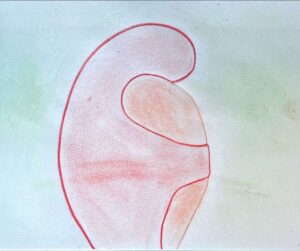
You may have heard the term “attachment” mentioned and wondered what it meant. It started with research in the 1950s that involved putting a toddler in a “strange situation” where the mother left the room and observations were made about how the child reacted to this, to a stranger entering the room, and to the mother coming back. It was noticed that some children have a secure attachment and some do not. This basically means the securely attached child feels the caregiver is reliable and safe. The attachment depends on how the parent responds to the child. Attachment theory has developed since them to include how adults form “attachment bonds” with one another and their children and what impact the secure and insecure types of attachment have on the developing child and on the adult.
One thing that has been discovered is that insecurely attached children do not tend to do as well in school as more securely attachment children. They also struggle more in adulthood.
Attachment between a child and its primary care giver gives the child the template from which it learns to form new relationships. If the primary care giver is secure or reliable, the child learns that relationships are safe. If the primary care giver is insecure or unreliable, the child learns that relationships are not safe.
Attachment between a child and its primary care giver provides the opportunity for the child to co-regulate with the person who gives it its greatest sense of security. If the attachment is secure and the primary care giver is well tuned in to the child, then when it is distressed it is more likely to be effectively soothed by the caregiver. This is known as co-regulating. This allows the child to learn that other people are reliable sources of calming. When a child learns this, that child in later life will be more likely to seek out others for help when in need. This is a good protective skill against depression, which is often characterised by the person withdrawing from others rather than reaching out for help.
Soothing a distressed child also helps the child learn how to cope with the strong emotions it is experiencing. We are not born with the understanding of the emotions we are feeling. Emotions for a child are strong and can be frightening. A securely attached caregiver who is in tune with the child’s experience is able to help the child learn to understand those emotions. This soothing helps the child to learn how to soothe itself. This is known as learning to self-regulate.
You may have heard the term “Resilience” as well. The ability to self-regulate and co-regulate are vital aspects of resilience. Resilience is the ability to not be overwhelmed by circumstances in life. This includes knowing when to take time out to calm down, being able to regulate emotions and being able to find and use resources to deal with life circumstances.
